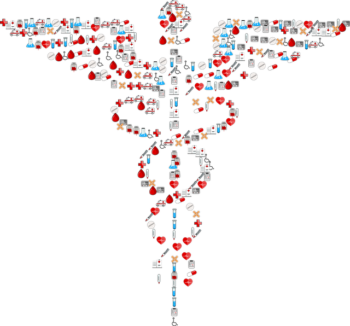 ONE DROP OF BLOOD AND THIRTY IMPORTANT TESTS?
ONE DROP OF BLOOD AND THIRTY IMPORTANT TESTS?
Hi everyone and Welcome to another WELLNESS WEDNESDAY. Today I’m sharing new information regarding a Blog I originally published a few years ago.
Titled ONE DROP OF BLOOD AND THIRTY IMPORTANT TESTS, this Blog was all about a wonderful new discovery that claimed to forever change the way we tested blood.
You see, millions of people – cancer survivors, individuals with chronic diseases or compromised immune systems – often have a lifestyle that requires constant medical tracking, testing and monitoring to ensure they stay as healthy as possible.
As a survivor of three different cancers, I am one of these individuals. A large part of my follow-up health care program – along with my fellow cancer survivors — includes regular blood testing. Some of us get tested once every three months — and some of us, like myself, get tested once every six months. We refer to this as doing our “blood work.”
The test we undergo is called the Complete Blood Count or CBC. This test provides important information about the different types of cells in the body, including the red blood cells, the white blood cells and the platelets. And, depending upon the amount of these cells in our blood, symptoms such as bruising, weakness or fatigue can be checked — and conditions such as infection or anemia can be diagnosed.
In addition to this, the CBC also can provide information about the thyroid, cholesterol levels, blood sugars, diabetes, kidney functioning, Vitamin D absorption, heart disease and sexually transmitted diseases.
But, for cancer survivors, the most important part of the CBC is its ability to detect signs of cancer through a process known as tumor marking. This can give survivors warning that a new secondary cancer may be developing or that a primary cancer is recurring. And this, of course, allows the survivor to seek immediate medical help and to catch and treat the cancer as early as possible.
Yet, having blood drawn for the CBC is not always an easy process. It requires a phlebotomist or nurse to collect several vials of a patient’s blood and for many individuals this can be stressful or painful.
For example, some cancer survivors have a condition known as “vein collapse” which means the major veins of the body run “flat” rather than round. Some elderly patients have fragile veins. Children have very tiny veins. And, in these situations, finding a vein, inserting the needle and drawing blood can be extremely difficult. It also can take several attempts.
That’s why we were all so excited a few years ago when a new process for drawing blood was announced. Elizabeth Holmes, a researcher with a background in electrical and chemical engineering, developed a method of testing blood called Theranos.
Unlike traditional blood testing, this method boasted the ability to run thirty different tests from a single finger prick and one drop of blood.
Clearly, all of us who depend on regular blood work to maintain our health were thrilled. Theranos promised us a new technology that was easy, fast, accurate, painless and cost effective.
As a cancer survivor and an attorney, however, I’m so sorry to report that Theranos did not live up to its promise. Apparently, the company confused its goal with its actual ability.
As a result, the company and its founder, Elizabeth Holmes, have been charged with fraud based on exaggerated or false statements about the company’s technology, business and financial performance.
I wondered about this. Over the last few years, every time I went to do my blood work, I always asked the technician about the new “one drop of blood test” and if it were available. The techs never had an answer for me. Now, I understand why.
My Grandmother always used to say, “If it sounds too good to be true, it probably isn’t true.” Well, Grandma, in this instance you were right. It still breaks my heart, however, as this particular carrot which was so temptingly dangled in front of us could have changed so many lives for the better.
In any event, new discoveries take place every day and technology continues to advance. So, let’s be patient. A new researcher may soon come along and find the way to make this broken promise a reality.
Until next time, thanks for joining me everyone, stay in GOOD HEALTH and . . .
TAKE THE COURSE AND TAKE CHARGE!



Leave a Comment